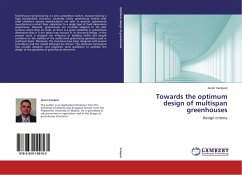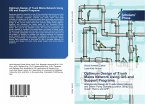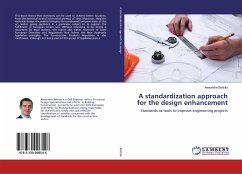Greenhouse manufacturing is a very competitive market, characterised by a high standardised structures. Generally, similar greenhouse models with small variations among manufacturers are sold. In general, greenhouse manufacturers restrict their calculation to a single type of fixed dimensions greenhouse. However, greenhouses are normally adapted to the plot surfaces where they are built, so there is a great variability in greenhouse dimensions that it is not taken into account in its structural design. In the present work is analysed the influence of building width and length variations on the stability of the multitunnel greenhouse geometry used in southeast Spain. Moreover, the structures have been designed with several procedures and the results obtained are shown. The obtained conclusions may provide designers and engineers some guidelines to optimize the design of this geometry of greenhouse elsewhere.
Bitte wählen Sie Ihr Anliegen aus.
Rechnungen
Retourenschein anfordern
Bestellstatus
Storno








